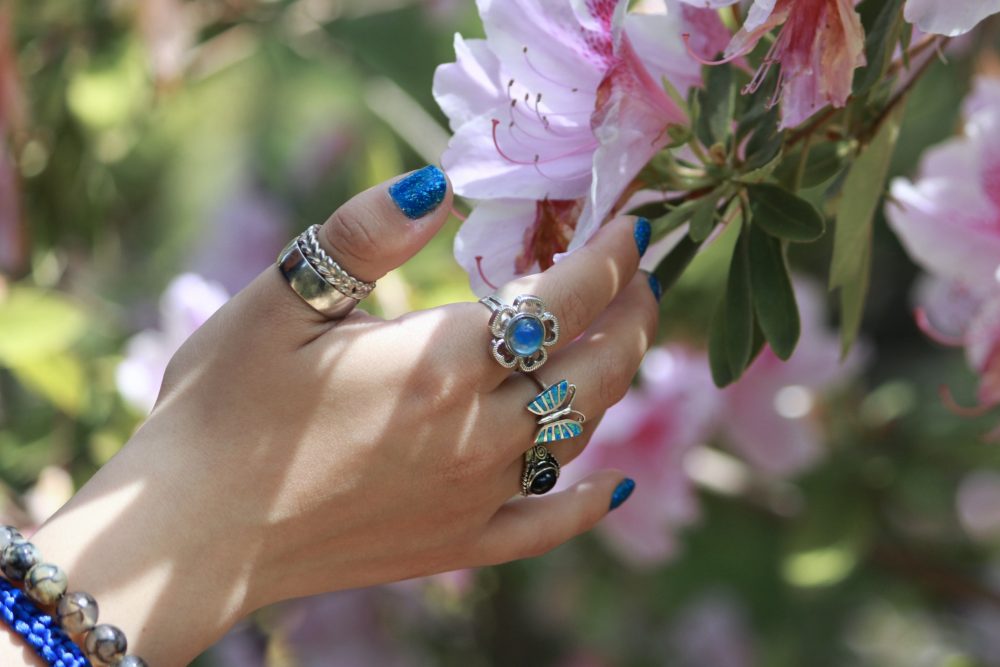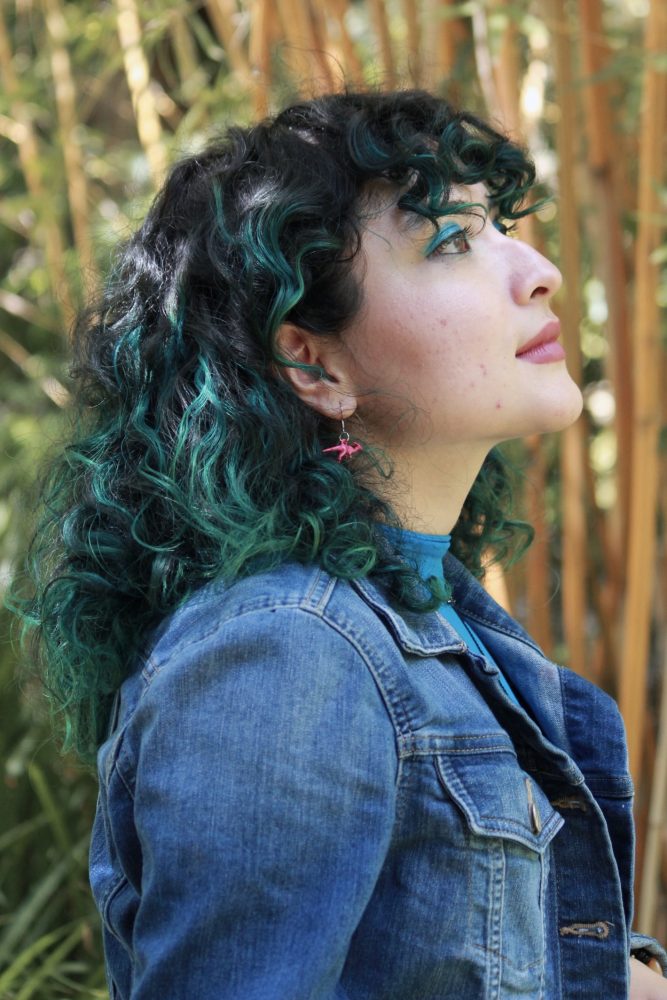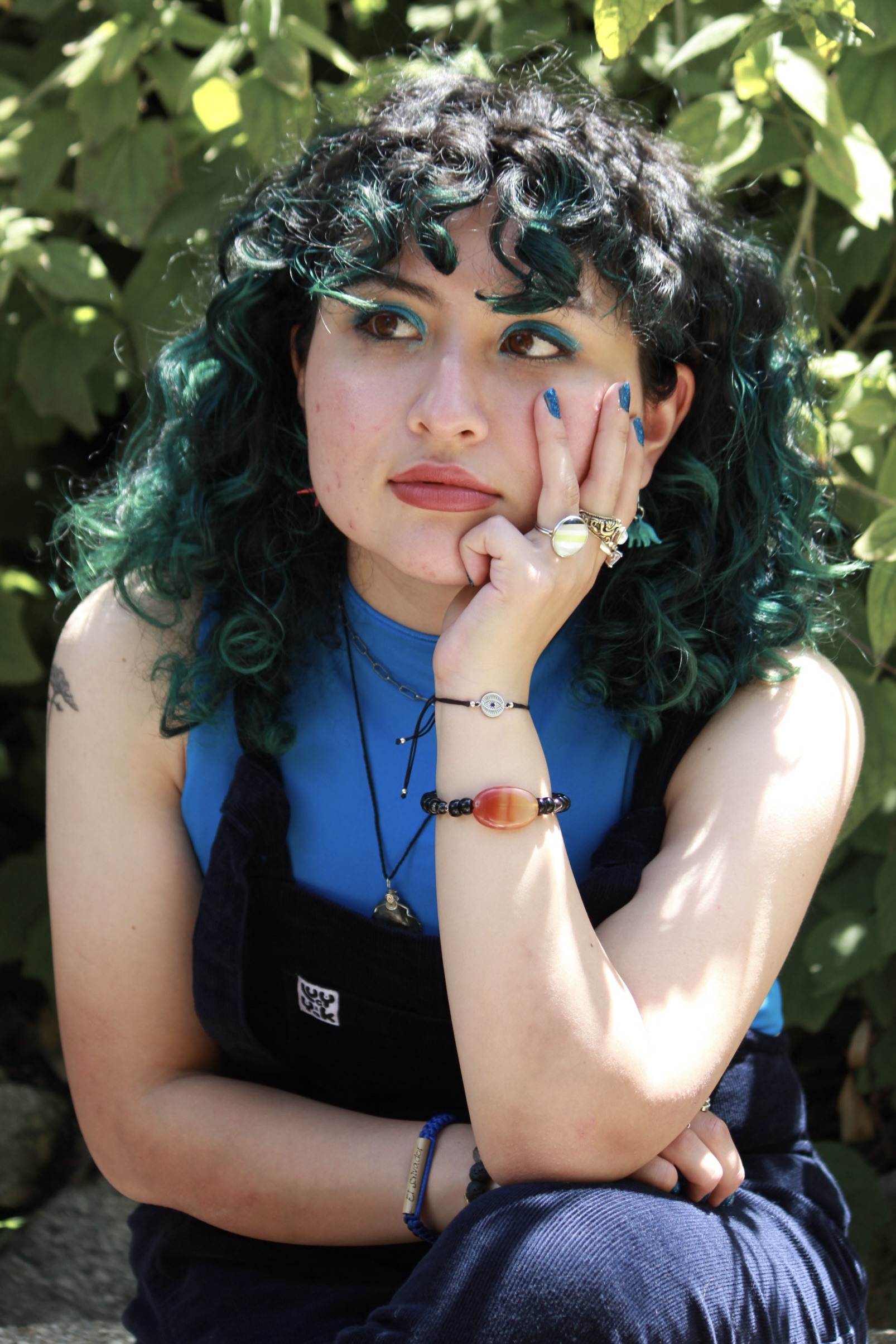Photo by Maddie McEwen/OutWrite
This article was originally published to represent Indigo (Serenity) in our Spring 2023 print issue “Color.”
“When you think about what you want to be, what do you lean toward? A man or a woman?”
I’m two hours into an evaluation with a gender therapist, and my heart has been hammering inside of my chest the entire time. If all goes well, I’ll be approved to pursue gender-affirming care. But this new question is one that I’ve spent my life struggling to answer.
“I want to be …” I lose my words. I clear my throat. I decide. “Nothing.”
It’s quiet. My hands shake.
“Let’s reframe that,” he says finally. “I want to be … ‘Something Else.’”
Woman.
I roll the word around my mouth like a stale, unbitten gumball. I linger on it until it dissolves, and I’m left with a chalky, acidic aftertaste coating my mouth. The word is sour, sharp, and unshakable. Even then, I couldn’t tell you what it means.
I was eight when my shape started to shift from straight lines to soft curves, and discomfort began festering inside of me. My discomfort mutated into disgust with each second I spent in an increasingly foreign body. I was eight when a man leaned out of his truck to whistle at me for the first time, and I learned my body exists for the world to look at, and they will look at it and think what they’ll think of it regardless of how I feel about it. I was eight when my body became my enemy.
I oscillated between hatred for my body and detachment from it for years. Girls envied my curves, and boys praised me for them; all the while, I said nothing about the countless nights I spent praying to gods I didn’t believe in in hopes that someone, somewhere had the power to rid me of this curse. I told my mother I felt that way, and she said one day I would love every curve I had because they were marks of my womanhood. I didn’t tell her that I dreamt of a world where I had no body at all, or that I felt a wave of nausea every time someone reminded me that I was a girl who would one day become a woman. I punished my body for sentencing me to this womanhood that I had never asked to be a part of. I punished myself by accepting this as the only way things could ever be.
I didn’t hate womanhood or femininity. I revered them in other women, and that reverence only furthered my disconnect with these concepts existing within myself. I admired my older sister’s gradual steps into femininity, yet felt a selfish twinge of frustration as she grew to love and respect her body — a body just like my own — while mine had only ever been a battlefield. I watched women on TV become mothers and wives, but any attempts to imagine myself in their place only resulted in white noise. I stood in fitting rooms with my boyish friends as we tried on prom dresses together, and when our mothers cooed over our transformations into women, there were stars dancing in their eyes while there was only panic in mine.
At one point, I threw myself into performing womanhood in a doomed effort to fit into the world the way I thought I had to. I wore dresses and blouses that highlighted the curves I hated. I put on soft, sweet eye paint, and I kissed my boyfriends with my fire engine lipstick. I conformed to everything I was supposed to be, and in doing so, I became a spectator in my own life. My hatred for my body twisted into hatred for myself and for a life filled with rules I was forced to abide by.
In a desperate bid to find some way out of the never-ending hole of self-hatred I was marinating in, I bought a chest binder. I saw myself without the part of my body that had plagued me with discomfort for so long, and for the first time in my life, I caught a glimpse of an end to the war I had declared on myself from the moment that womanhood had first been pushed onto me.
I explored masculinity. There was joy in aligning myself with manhood through dressing up in masculine clothing, expressing the natural mannerisms womanhood had demanded I repress, and ordering coffee with different masculine names just for the thrill of hearing them called out in a crowded cafe. When I further masculinized myself by getting a cropped haircut, I felt conflicted. There was simultaneous overwhelming euphoria from seeing myself in my reflection for what felt like the first time, and frustration because I knew that masculinity was not all that I was.
What is masculinity? How can you define femininity, womanhood, or manhood in ways that capture the nuances of how different people experience them? Defining these concepts by biological sex is reductive, and these definitions often exclude intersex populations and people assigned a biological sex who don’t conform to the definition of that sex in one or more ways. Defining them by traditional ideas of these concepts erases the different ways people experience them. Even definitions rooted in queer theory are vague and consequently can’t capture every experience. It’s a Sisyphean effort.

My foray into the ends of the binary solidified that whatever I was, it was Other. I use nonbinary — specifically agender, or genderless — to describe myself. However, I quickly learned that, like womanhood and manhood, being genderless comes with its own set of expectations. The legitimacy of nonbinary identities is frequently called into question. If you were born into the kind of body I was born into, you need to keep your hair cropped, your clothes oversized, and your body thin to avoid as many curves as you can. If you are not pursuing medical transition, you are lying about your identity, and yet if you are pursuing it, you are still thought to be lying about your identity.
Does my physical appearance need to clearly convey the intricacies of my relationships to masculinity and femininity for me to have the right to say that I exist outside the gender binary? Can specific styling choices and body shapes only convey either masculinity or femininity? I can continue to wish that more people would ask themselves these questions instead of invalidating nonbinary identities. But in the end, I am the only person who can make peace with myself. Part of establishing that peace has been pursuing gender-affirming care.
I initially thought that wasn’t a possibility for me because I didn’t have a binary identity. What does gender-affirming care look like when you feel you have no gender to affirm? I started to contemplate it after I came out to my supportive family and friends, and through playing with my gender expression, found myself connecting with the gender nonconforming experience in a way that I never had with womanhood or manhood. The thought that I could create a body I was fully comfortable with was like finding an oasis after a lifetime of wandering a wasteland.
I am tired of war. Living has always been my birthright, yet I had never felt alive before I was approved to get the care for my body that I used to desperately pray for, before I had the language to describe all the Otherness swirling inside of me, and before I was surrounded by love and support for all that I am. I know now that instead of reducing myself to Nothing, I can just be Something Else. It’s not my job to deconstruct womanhood and manhood or to broadcast my identity in an easily digestible way so that I am allowed to claim it. It’s my job to live.

Credits:
Author: Lorely Guzman (They/Them)
Artist: Maddie McEwen (She/They)
Copy Editors: Michel (He/They), Ava Rosenberg (She/They)

